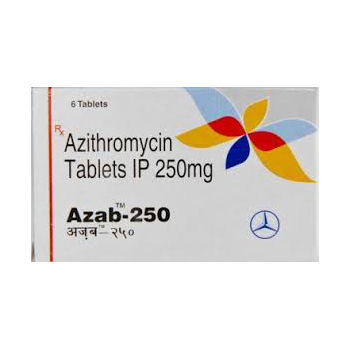Azithromycin is one of the most popular antimicrobials available on the market today. It is used to treat various bacterial infections, primarily those associated with the respiratory organs.
Release form
The drug can be produced in various dosage forms – tablets with a film coating, absorbable tablets, capsules, suspension for children, powder for preparing a solution for parenteral administration. But the most commonly used tablets and capsules of Azithromycin. They have a dosage of 125, 250, 500 mg of the active substance. Usually packs contain 3 tablets or 3 capsules.
Powder for the preparation of oral suspension can have a dosage of 15, 30 or 75 mg of Azithromycin per gram of powder.
Instructions for use
In most cases, in the treatment of acute respiratory infections the following scheme is used – one dose of the drug at a dosage of 500 mg per day. You should strive to take the drug at the same time, after 24 hours. The duration of treatment is usually small – 3-5 days.
With infections of the skin and soft tissues, Lyme disease on the first day take 1 g of the drug, and in the next 4 days – 500 g each. Reception in these cases is also once a day.
In the treatment of acne in the first 3 days, 0.5 g of the drug is taken, that is, 1 capsule or tablet of 500 mg per day or 2 tablets of Azithromycin 250 per day. Then a break of 4 days is made, and then another 0.5 g is taken every week. In total, you need to take 12 tablets of 500 mg, that is, the course of treatment is 10 weeks.
With uncomplicated urethritis or cervicitis caused by chlamydia, a single dose of 1 g is enough.
In combination therapy from Helicobacter Pylori, it is necessary to take Azithromycin in a dose of 1 g for 3 days over 3 times.
Children from 12 years old and with a body weight of more than 45 kg with infections of the respiratory tract of the skin and soft tissues are prescribed three tablets of 500 mg for 3 days.
The dose for children weighing up to 45 kg is calculated on the basis of their weight – 10 mg / kg per day. The course of treatment is also 3 days.
According to the instructions for use, with moderate violations of the kidneys, dose adjustment is not required.
You should pay attention to the fact that food intake significantly affects the digestibility of the drug. Therefore, it must be taken 1-2 hours before meals or 2 hours after meals.
Antacids and alcohol also reduce the concentration of the drug in the blood. Therefore, while taking antacids and azithromycin, it is necessary to observe an interval of 2 hours between taking these medications. Simultaneous use of the drug and alcohol is also not recommended.
Tetracyclines and chloramphenicol, when taken together with the drug, enhance its effect. The drug increases the concentration of digoxin, is incompatible with heparin.
Side effects when taking the drug are infrequent. However, they are possible. The most common disorders associated with the gastrointestinal tract – pain in the abdomen and stomach, diarrhea, nausea, constipation, and sometimes vomiting. Do not forget that, like any antibiotic, Azithromycin can affect the normal intestinal microflora, which can be expressed in stable dysbacteriosis. Therefore, antibiotic therapy should be combined with the restoration of intestinal microflora with the help of probiotic preparations. Skin allergies, headache, candidiasis, vaginitis in women, changes in taste and smell, dizziness, insomnia may also occur.
